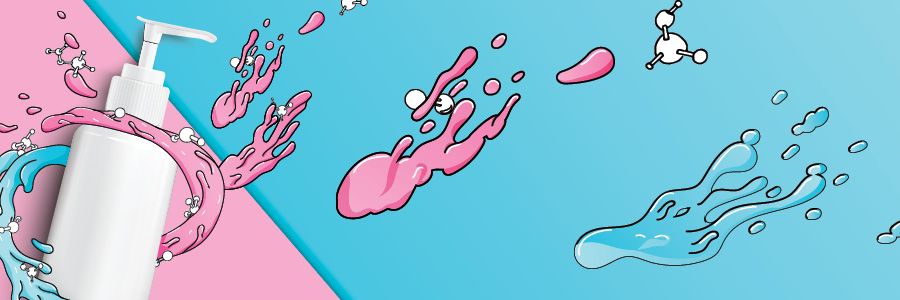


Sign-up for {N}power to get exclusive discounts, newsletters, members-only features, and more!


How do you get ready for the day? I know, I know… coffee first. But what does your personal care routine look like? There’s likely shampoo and conditioner, maybe shaving cream, body wash, and deodorant, body lotion, face cream, toothpaste, and an arsenal of hair styling products. Then there’s makeup. And for many people, the finishing touch is a spritz of perfume or cologne. Most of us go about our daily routines without a thought of what is in each of these products. But did you know that the law that regulates personal care products was created in 1938, and hasn’t been updated since? And that under this law, the Food and Drug Administration (FDA) doesn’t have the legal authority to screen products for potentially harmful chemicals? So then who is responsible for ensuring the safety of these products that we all use every day? The companies that make them.1 The industry says chemical ingredients found in conventional cosmetics are safe, but independent research investigating the environmental and health impacts of certain cosmetic ingredients is proving otherwise.
HUMAN
A study published in early 2018 and led by researchers from the National Oceanic and Atmospheric Administration (NOAA) in Boulder, Colorado, found that volatile chemicals from our everyday personal care products contribute as much air pollution as car emissions. You read that right—the personal care products you use, from shampoo and lotion to deodorant and perfumes, can emit just as many polluting volatile chemicals as your car’s tailpipe! In fact, we are releasing them at about an equal rate, and it’s from the petrochemicals found in many of these body care products. Researchers estimate that emissions from these products are contributing to half of all the volatile organic compounds (VOCs) that contribute to worsening air pollution.2
Cosmetics, perfumes, deodorants, and many other common consumer products contain VOCs, which according to the Environmental Protection Agency (EPA), “…are emitted as gases from certain solids or liquids. VOCs include a variety of chemicals, some of which may have short- and long-term adverse health effects.”3
VOCs have been linked to many health issues, including headaches, nausea, dizziness, and memory loss. Studies have found that long-term exposure to high levels of VOCs has caused cancer and nervous system damage.4
While most people use far more gallons of gasoline than perfume in their lifetime, the key difference is how these products are stored (or, in this case, not stored).
“Gasoline is stored in closed, hopefully airtight, containers and the VOCs in gasoline are burned for energy,”5 study co-author and NOAA atmospheric scientist Jessica Gilman said in a statement. “But volatile chemical products used in common … personal care products are literally designed to evaporate.
You wear perfume or use scented products so that you or your neighbor can enjoy the aroma. You don't do this with gasoline.” So when you smell the waft of perfume or other scented personal care products, you’re also likely sniffing VOCs.
Problematic ingredients commonly found in personal care products include mineral oil, butylated hydroxanisole (BHA), butylated hydroxytoluene (BHT), oxybenzone, phthalates, parabens (butyl, ethyl, methyl, and propyl), diazolidinyl urea, isopropyl alcohol, toluene, and artificial fragrance, which is commonly listed simply as “fragrance.” Artificial fragrances are usually derived from petroleum byproducts and are made from a laundry list of chemicals that do not have to legally be disclosed. Common chemicals found in “fragrance” have the potential to cause skin, eye, and respiratory tract irritation, headache, nausea, liver damage, and neurotoxicity.6 Additionally, some of these ingredients, including phthalates and parabens, are known endocrine disruptors.7 8 9 10
The findings of a study published in late 2018, conducted at the University of California at Berkeley, showed that early exposure to several chemicals commonly found in personal care products, including parabens and phthalates, can impact young people’s hormones and development.
For the study, researchers recruited pregnant women from Central California’s Salinas Valley and measured concentrations of several chemicals commonly found in personal care products, including phthalates and methyl and propyl parabens, in their urine. The researchers also collected urine samples from the children born to the women when they were nine years old and measured the same chemicals. More than 90 percent of urine samples from both the mothers and the children showed detectable concentrations of the chemicals.11
The timing of puberty was assessed among 179 girls and 159 boys every nine months between the ages of nine and 13. The daughters from mothers who had higher levels of these chemicals, particularly parabens, were found to experience puberty at younger ages, including earlier breast development and an earlier onset of the menstrual cycle. Earlier genital development was observed in the boys with higher levels of paraben in their urine.12
“Girls and possibly boys have been experiencing puberty at progressively younger ages,” the researchers said in a statement.13 “This is troubling news, as earlier age at puberty has been linked with increased risk of mental illness, breast and ovarian cancer in girls, and testicular cancer in boys.”
“While more research is needed,” co-author Kim Harley said, “people should be aware that there are chemicals in personal care products that may be disrupting the hormones in our bodies.”
Previous research has found that endocrine disrupting chemicals like phthalates and parabens reduce sperm count and quality,14 disrupt thyroid function,15 16 and can lead to changes in reproductive hormones in women.17 Parabens, in particular, have been found to stimulate the proliferation of breast cancer cells and may play a role in metastatic growth of breast cancer.18
Many products you use to keep kids clean and fresh are loaded with harmful chemicals too, including petroleum derivatives. For example, many baby oils are made from mineral oil, which is a petroleum-based product.
“From baby shampoo to diaper wipes, children are exposed to products every day containing chemicals that have not been assessed for their hazards to children,” according to a 2007 investigation by the Environmental Working Group (EWG) that exposed the lack of federal safety protections for children's personal care products.19
EWG also found that 82 percent of children are exposed every week to one or more ingredients with the potential to harm the brain and nervous system and 80 percent of children's products marked as gentle and nonirritating actually contain ingredients linked to allergies and skin or eye irritation.
Just because a product is marketed for babies or kids does not mean that it is a non-toxic
item. Young people are more susceptible than adults to developing health issues from harmful chemicals—always be vigilant about checking the ingredients in products marketed for babies and children. Avoid the problematic ingredients listed earlier in this article, and instead look for nourishing, organic ingredients like cocoa butter, shea butter, honey, tea tree oil, aloe, and calendula.
Before you wash your hair in the morning or put your face cream on at night, you may want to review the ingredient lists on your favorite products and work to reduce your exposure to harmful toxins. Just as you spring clean the house or lighten up your diet in the spring, now is a wonderful time to take stock of the personal care products you use daily.
You don’t have to throw everything out at once. Simply replace items as you use them with safer, non-toxic ones. Replacing items piece by piece allows for less overwhelm and helps keep your budget in balance. In terms of fi finding good replacements, become familiar with the ingredients you should avoid (such as parabens and phthalates) and always read labels. A good tip is that words like “natural” are not regulated and don’t always equal non-toxic.
A survey conducted by the EWG that included 2,300 people found that the average woman uses 12 different personal care products containing 168 unique chemicals daily, while the average man uses six products containing 85 different chemicals.20 As you begin to think of spring cleaning this year, be sure spring cleaning your family’s personal care routine is at the top of the list!

According to a recent study published in the American Journal of Obstetrics & Gynecology, women of color have higher levels of beauty product related chemicals like parabens and phthalates in their bodies compared to white women.21 The study revealed that African American women purchase nine times more ethnic hair and beauty products than other groups, particularly hair relaxers and straighteners, and carry a heavier body burden of personal-care derived chemicals. A separate analysis of 1,177 ingredients conducted by the Environmental Working Group (EWG) found that less than 25 percent of beauty products marketed to black women scored low in potentially hazardous ingredients, compared to about 40 percent of products marketed to the general public. The worst-scoring products were hair relaxers, hair colors, and bleaching products, each receiving an average score indicating a high potential hazard. Health hazards linked to the ingredients included cancer, hormone disruption, developmental and reproductive damage, and allergies.22



Sign-up for {N}power to get exclusive discounts, newsletters, members-only features, and more!